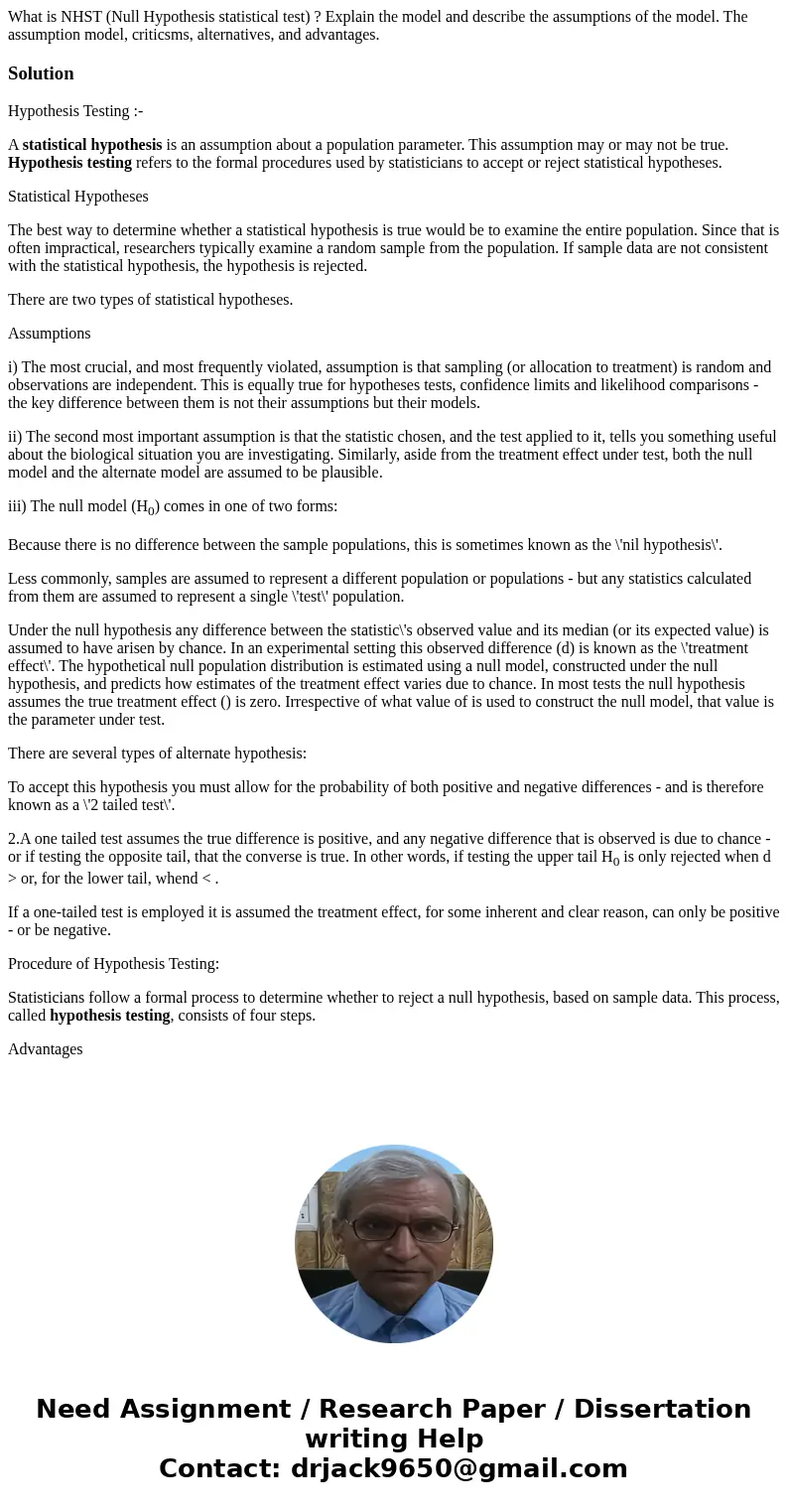What is NHST Null Hypothesis statistical test Explain the m
What is NHST (Null Hypothesis statistical test) ? Explain the model and describe the assumptions of the model. The assumption model, criticsms, alternatives, and advantages.
Solution
Hypothesis Testing :-
A statistical hypothesis is an assumption about a population parameter. This assumption may or may not be true. Hypothesis testing refers to the formal procedures used by statisticians to accept or reject statistical hypotheses.
Statistical Hypotheses
The best way to determine whether a statistical hypothesis is true would be to examine the entire population. Since that is often impractical, researchers typically examine a random sample from the population. If sample data are not consistent with the statistical hypothesis, the hypothesis is rejected.
There are two types of statistical hypotheses.
Assumptions
i) The most crucial, and most frequently violated, assumption is that sampling (or allocation to treatment) is random and observations are independent. This is equally true for hypotheses tests, confidence limits and likelihood comparisons - the key difference between them is not their assumptions but their models.
ii) The second most important assumption is that the statistic chosen, and the test applied to it, tells you something useful about the biological situation you are investigating. Similarly, aside from the treatment effect under test, both the null model and the alternate model are assumed to be plausible.
iii) The null model (H0) comes in one of two forms:
Because there is no difference between the sample populations, this is sometimes known as the \'nil hypothesis\'.
Less commonly, samples are assumed to represent a different population or populations - but any statistics calculated from them are assumed to represent a single \'test\' population.
Under the null hypothesis any difference between the statistic\'s observed value and its median (or its expected value) is assumed to have arisen by chance. In an experimental setting this observed difference (d) is known as the \'treatment effect\'. The hypothetical null population distribution is estimated using a null model, constructed under the null hypothesis, and predicts how estimates of the treatment effect varies due to chance. In most tests the null hypothesis assumes the true treatment effect () is zero. Irrespective of what value of is used to construct the null model, that value is the parameter under test.
There are several types of alternate hypothesis:
To accept this hypothesis you must allow for the probability of both positive and negative differences - and is therefore known as a \'2 tailed test\'.
2.A one tailed test assumes the true difference is positive, and any negative difference that is observed is due to chance - or if testing the opposite tail, that the converse is true. In other words, if testing the upper tail H0 is only rejected when d > or, for the lower tail, whend < .
If a one-tailed test is employed it is assumed the treatment effect, for some inherent and clear reason, can only be positive - or be negative.
Procedure of Hypothesis Testing:
Statisticians follow a formal process to determine whether to reject a null hypothesis, based on sample data. This process, called hypothesis testing, consists of four steps.
Advantages

 Homework Sourse
Homework Sourse